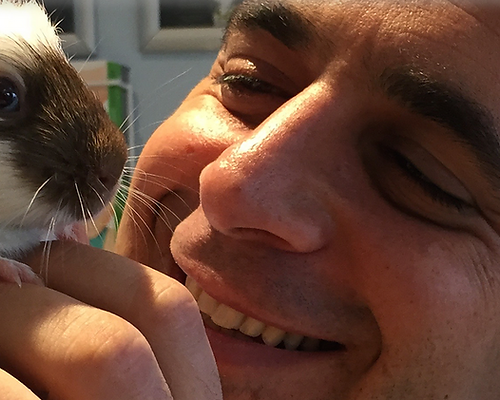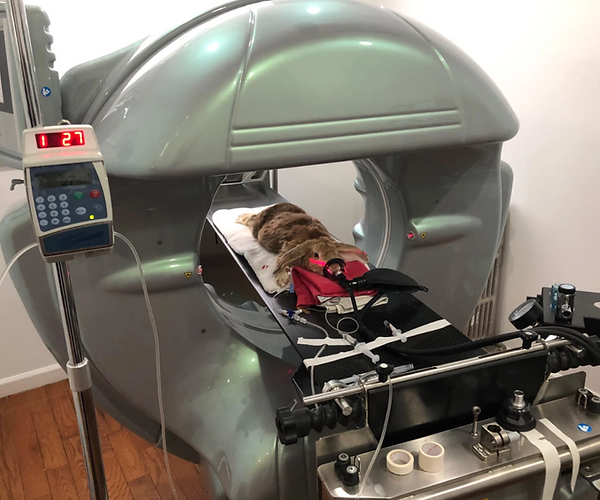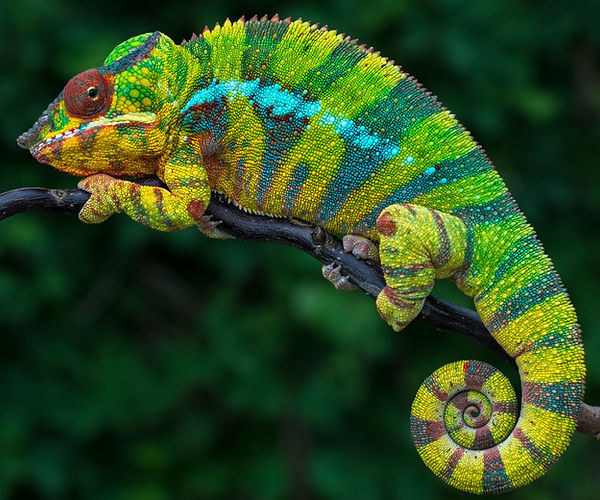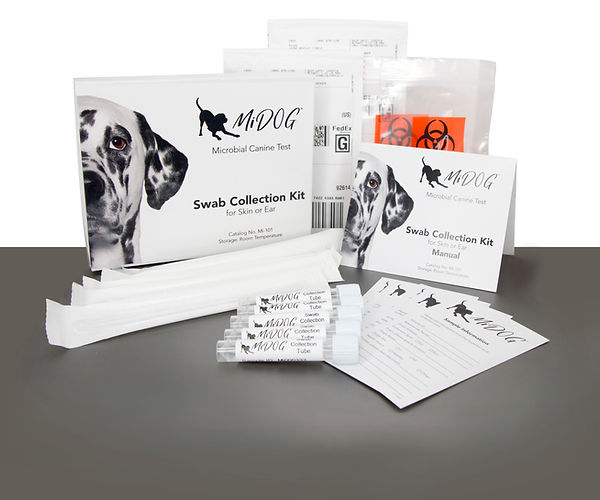
With an estimated 19.4 million American households and 1.4 million Canadian households owning exotic pets, it’s no wonder the demand for exotic pet veterinarians has only been increasing.
Unfortunately, many pet owners are unaware of the differences between a general veterinarian and a veterinarian who specializes in birds and exotic pets. It is important for any exotic pet owner to find a veterinarian whose expertise lies in the field of their pet’s field of medicine; from diagnostic and clinical technology designed for exotic animals to experience and educational background, exotic pet veterinarians are simply the ones best equipped to give the highest quality of care to your furry, scaly or feathery best friend!
Here today we have interviewed Dr. Shachar Malka, an exotic pet veterinary expert who practices at his Long Island Bird & Exotics Veterinary Clinic. Dr. Malka treats animals from the Bronx, Manhattan, Staten Island, Brooklyn, New Jersey, Queens, and Long Island. With more than 15 years of experience working with exotic animals, he is also a member of the Association of Avian Veterinarians, Association of Exotic Mammal Veterinarians, Association of Reptile and Amphibian Veterinarians, American Association of Zoo Veterinarians, and the American Veterinary Medical Association.
The purpose of this interview is to help guide exotic pet owners through the important issues to consider when determining whether an exotic pet veterinarian is right for their needs.
And so, without further ado, meet Dr. Malka!
Q: Would you like to tell me a little bit about yourself and your background and interests?
Good morning. I was born in Israel and received both my undergraduate degree in biology as well as my doctorate in veterinary medicine there. In college, my studies focused primarily on zoology and marine biology as I had initially planned to be a marine biologist. But once I got accepted to veterinary school, I switched my focus. I fell in love with medicine. It could have been any area of medicine honestly, not just veterinary medicine. But given my background in zoology, my focus was always on wildlife conservation. And from there, it was fairly easy to move in the direction of the avian and exotics world, which deals with the types of species that are kept as pets.
After vet school, I practiced for a short time in Israel and then accepted an internship in avian and exotic medicine at the University of Guelph, Canada, at the Ontario Veterinary College. I completed a one-year internship there, then was accepted into and completed my residency at UC Davis, California. The residency program was a three-year program focusing solely in avian and exotic pet medicine and surgery. That included all of the different species generally kept as pets with some wildlife. After completing my residency and becoming board certified in avian medicine, I then accepted a position with a large veterinary specialty hospital where I founded an avian and exotic department for them in Sacramento. Three years later, I was offered an opportunity to open an avian and exotics department at the Humane Society of New York in Manhattan, a non-profit hospital that until that point was caring exclusively for cats and dogs. I made the move across the country and fast forward, I am still here – a New Yorker after all these years.

The image above depicts Dr. Malka treating a patient.
Q: Could you tell me a little about your current practice?
Five years ago, I opened a fully operational veterinary practice called Long Island Bird and Exotic Veterinary Clinic. We grew very quickly and are now a multi-doctor hospital practicing exclusively in avian and exotic medicine. The hospital is a full-service, state-of-the-art facility where we perform CT scans, endoscopic and other surgeries, and intensive medicine. We also have a not-for-profit arm of the hospital, called Rift Valley Wildlife Clinics, which is a 501(c)(3) charity. We see some wildlife as part of our charity work as I have a passion for wildlife medicine. We also support another wonderful organization with which we work closely, called “The Wild Bird Fund” located in Manhattan. They bring their injured birds to us for medical care. This is important to us as part of our service to our community.
Q: What technologies do you use in your practice that set you apart from general veterinarians?
Well, unlike traditional vets who see mostly cats and dogs, we are a specialty animal hospital with specially trained vets who are experts in caring for and treating reptiles, amphibians, small mammals, parrots, and other birds. In fact, we do not see dogs and cats at all. We see about 30% regular appointments, wellness exams, or mildly sick pets, and about 70% emergencies. We were one of the few veterinary hospitals in the country that purchased an in-house CAT scan so soon after opening, which turned out to be a real game-changer in the way we were able to practice medicine. CAT scans help accurately locate the problem which helps us respond quickly to it. We can then proceed into surgery, or for an endoscopy, or manage an intensive medical condition.
We consider ourselves a cutting-edge hospital; whenever there’s a new technology, we are usually pretty fast at considering whether to acquire it for the hospital. We commonly use methodologies like specific PCRs to look for different pathogens in the exotics world. We recently became involved in an anti-cancer vaccine study which is very exciting and hopefully will lead to new ways of treating cancer in birds and exotics.
We collaborate with a company called MiDOG, which uses DNA sequencing methodology that serves as a replacement or supplement to traditional cultures and allows us to more accurately identify and better treat infections. We are very excited to be part of these studies. We were supposed to present last year at a conference but due to COVID we had to postpone until this year. With MiDOG we compared traditional cultures and DNA sequencing on a case-by-case basis and found that the results correlated with what we expected, and after getting more and more comfortable with this new technology, we’ve switched almost completely to DNA sequencing when it comes to cultures.
And we rely on that quite a bit.
I think right now there are less than ten exotic pet veterinary centers that utilize CT (T scan) exclusively for these unique species. It does require special training. Because we are dealing with many different species, one of the biggest challenges that we face is simply the diversity of species- each very different from one another. Not all avian species are the same, not all reptile species are the same, and so on. Another significant challenge is the small size of the species. There’s a big difference when dealing with a dog weighing 30 pounds with a heart condition for example and a lovebird with the same condition weighing just 25 grams. That’s very challenging. We perform surgeries to remove tumors or abscesses from small pets that weigh 50-100 grams. So, it requires special techniques and special knowledge and a lot of time investment to continually improve our skills and knowledge base.

Q: Could you explain the differences in training between a general veterinarian and an exotics veterinarian?
Sure. Both must complete a four-year doctor of veterinary medicine degree, which consists of classroom instruction, laboratory experience, and clinics. Both must pass state licensing requirements. However, specialists must meet additional educational requirements pertaining to their field, which usually includes completing a rigorous residency program. I completed a year internship and then a three-year residency in avian and exotics medicine.
Q: What types of animals do you see in an exotics clinic?
Our practice sees more than 5,000 patients per year, and we treat a very diverse group of animals including, rabbits, ferrets, guinea pigs, hedgehogs, and smaller rodents. We see birds, reptiles, and amphibians. Additionally, we treat pet pigeons, backyard poultry, and water birds. We are one of the few practices in the area that also sees fish, and we are able to offer them the same level of dedicated medicine.
Q: What are some other difficulties in diagnosing and treating exotic animals over more common types of pets?
That is a great question. Almost all the species we deal with are very resilient to stress and pain in the way they express it. Showing pain doesn’t provide any advantage in the wild (other than becoming someone else’s food), so our patients have no evolutionary advantage to showing their illness and many times, mask it. One of the biggest challenges we face is that by the time a pet owner comes to the clinic, his or her pet’s problem may have existed for quite some time already before getting noticed by the owner. So, while this may be the first we are seeing of it, the ailment might have been there for a week or longer. Essentially, the clinical signs are very often being masked by the animal itself, along with a little bit of a “wait-and-see” approach taken by the owners. Because of this, once the patient comes in, often the conditions are already complicated, and more difficult to treat. So, I would say that we see a lot more emergency cases than the average dog and cat practitioner where this masking of symptoms and/or waiting approach by the pet owner isn’t as prevalent.
Still, we try to educate owners of exotics and help train them to care for their pets. The goal is for owners to come in preventively. We are big on preventative medicine. Dogs and cats get vaccinated, and their owners are more programmed to come in for checkups and yearly visits. With exotics, a lot more of our visits are urgent and patients need to be seen right away. So those are some of the challenges that are a little bit different when working with exotics.
Additionally, having the knowledge required to perform medicine on so many different species that are so different physiologically and behaviorally is another point that needs to be considered when working with exotics. Oftentimes, dogs and cats are more straightforward to work with in regards to handling and restraining – exotics are not. This adds some anxiety and additional risks to the procedures. As a result, we tend to use sedation a lot more frequently than dog and cat practices. We often use sedation just to alleviate this anxiety that can only exacerbate the condition of the animal and put them at a higher risk for complications. So, as you can see it’s a lot more involved. Our nurses, veterinary technicians, and staff need to be highly trained and highly specialized as well. So it’s an additional challenge to find the people that are interested in learning and becoming specialized in exotics.

Q: For pet owners looking for exotic pet veterinarians, what questions should they be asking to determine if it’s a right fit?
I think anyone looking for an exotic pet veterinarian should research online to learn the level of training and experience the practitioner possesses.
It is very important to find out whether it is a “mixed practice” or a “specialty practice.” I absolutely recommend specialty practices for exotics over mixed practices. Mixed practices can offer some help, but they are more generic and not really specialized in exotics if they’re practicing on dogs and cats 80% of the time and just dabbling in exotics for the other 20%. This is still very common, unfortunately, and may cause pet owners to potentially waste time as well as money. By the time pet owners arrive at a specialist, their pet may already be in a much more serious situation.
It’s okay to ask your doctor how many times he or she has performed a specific procedure just as you would ask in human medicine. We eventually must be able to convince our pet owners to allow us to anesthetize their pets so we can perform the required procedures and complete the diagnostics, so we can help the pet. Many times, there is this misconception that exotics cannot be anesthetized safely and that they will die more easily because of it. That’s simply not true and is a result of the bad experiences people have had with general practice.
Q: What does preventative care look like for exotics?
Well, I tell all new clients that one of the most important things to do is schedule a yearly checkup, where we will do bloodwork and a fecal test to check for parasites. Because exotic species are very reclusive, in many cases, we don’t have a baseline to compare against over the years, and therefore don’t really know if there are any issues concerning kidney parameters, or liver parameters, for example. Those yearly checkups are very important. We spend a lot of time talking about husbandry and going over questions relating to types of bedding used, frequency of cage cleanings, kinds of food being provided, frequency of free time outside of the cage, temperature and humidity settings.
We tend to correct a lot of mistakes being made especially with reptiles, amphibians, and birds. There are a lot of issues that can be avoided and prevented which we cover during these exams. It’s almost impossible to offer those species the correct environment 100% of the time and there’s also a lot of misinformation on the internet. Come talk to us before you Google, and you’ll be a little smarter about how you research online. So yes, we do spend a lot of time on that. Preventive medicine can also include offering certain vaccines when they’re available to exotics, treating different types of parasites routinely, and explaining all those scenarios.

Q. Could you expand a little on how technologies could potentially help with preventative medicine?
In flock situations when you have groups of animals and there’s an issue or there’s something you suspect, like a yeast infection, [Next-Gen Sequencing technology like] MiDOG has been shown to be very effective in the diagnosis of fungal organisms and different types of yeast.
So, I can see how that can be used. We had clients with colonies of several budgies and several birds and then instead of testing the individual birds, we would use environmental swabs or fecal swabs from multiple species. We have also used MiDOG in cases where we suspected a chlamydia infection in a group of birds. So again, instead of swabbing just the individual patient, we swapped all of them – and this approach can save clients money. For the most part, it’s still individually based on a specific condition, and we use MiDOG where a culture would have indicated.
We found that this technology can definitely offer us a more comprehensive answer when it comes to understanding the prominent microbial organisms we’re dealing with. Also, we realized that in many cases we’re missing anaerobes that are detected by DNA sequencing technology. All kinds of fastidious organisms are very hard to grow [using culture-based methods] and then of course, the yeasts and fungal organisms. We found a whole new world of organisms that were missed before. So it’s a very useful, powerful tool for us.
In reptiles, there’s a specific condition known in layman’s terms as “yellow fungus disease (CANV)”- a fungal disease that can be very dramatic or even fatal in bearded dragons, iguanas, and some other types of reptiles. This is a group of organisms rather than just one, and we keep finding more and more organisms in the fungal kingdom that create this disease; microbe technologies (vs PCR) enabled us to detect this. PCR is very specific, and unless we’re looking for specific primers of that specific organism, we’re not going to get a positive answer unless this organism is there. Alternatively, MiDOG is more extensive in looking at the relative volume and we have found that specifically in this disease, we prefer to use MiDOG over PCR.
Q: Are exotic pet veterinarians more expensive compared to general practitioners?
Not necessarily, but I personally think they should be for several reasons: we have to spend more time on each case and it takes a much greater specificity of knowledge, extensive education, training, and equipment to do our jobs. Moreover, the overhead is even more expensive in exotic practices. However, the truth is we are more affordable. Just by way of example, our CT scan test is about half of the price of what it would cost to run a CT scan on a dog or a cat. And that’s true for almost any other major procedure.
Q: Who was your most memorable patient?
One of the biggest differences between an exotic patient and say a dog or cat is the lifespan. Some birds can live 50, 60 years. Cockatiels around 20 to 30. Reptiles even longer. You can imagine the extent of the human-animal bonds being formed as a result. So, I guess, when you ask me about memorable patients, I think about the older client that brings in an older patient. I have a very soft spot for all the geriatric patients for whom we are caring, both on the human and animal sides. And you’re able to tell that some have had a really long run together – 40 or 50 years. Those patients are extremely dear to my heart – dear to everyone’s heart. We just recently had to euthanize a turtle that had been in the family for 50 years, and that was very difficult. This specific turtle was given to its owner when she was a child, now she’s a mother to college-aged children, so there’s a whole life story there. Those are amazing experiences that you can only really appreciate as an exotics specialist, mostly because of the patients’ longevity.

Find out if your vet uses MiDOG before you book your next appointment!
For health-related questions about your reptile or other exotic pet, reach out to a veterinarian that specializes in exotic pets.
Categories: Exotic Pets, Pet Parents, Veterinarian Guides

